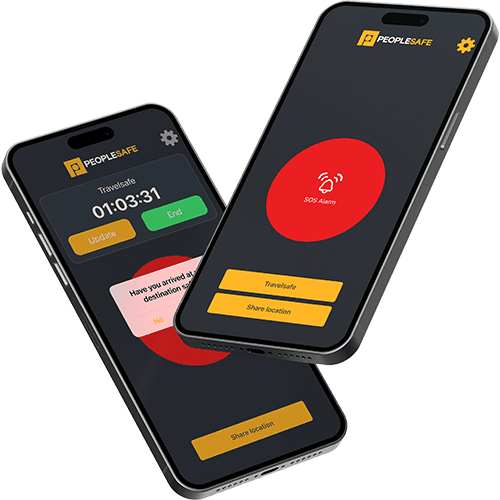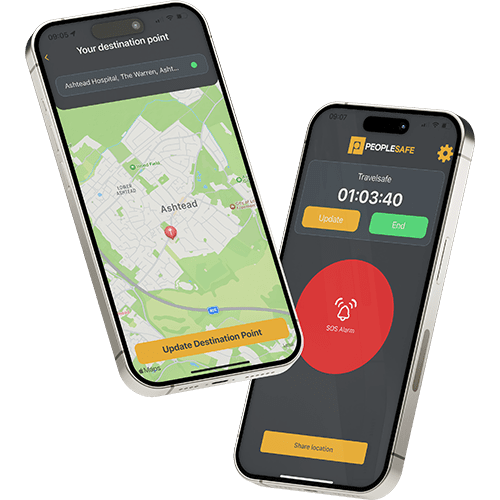Creating an Employee Benefits Package That Attracts Top Talent
In a competitive job market, attracting and retaining top talent is a challenge for many organisations. One of the simplest and most effective strategies to achieve this is by offering an attractive benefits package that meets the needs of your employees.
An employee benefits package, also known as an employee benefits scheme, is a set of perks that are offered to employees as additional compensation on top of their salary. This could include health insurance, discounted gym memberships, death-in-service payments, social events, an office football table, and even access to lone worker apps or personal safety devices.
While certain employee benefits such as pension contributions, paid parental leave, and paid annual leave are mandatory according to UK legislation, organisations have the flexibility to choose what additional benefits to offer based on their workplace culture, company values, and the needs of their employees.
However, creating a successful benefits package goes beyond ticking boxes and copying the benefits offered by your competitors. It’s important to consider what your employees value most and align your offerings with their needs and preferences. In competitive job markets, this could be the difference between keeping or losing the top talent needed to make your business successful.
Reasons to invest in a benefits package
While benefits platforms are typically implemented with employees in mind, they can also have significant business benefits. From improving employee morale to reducing turnover and absenteeism, a well-designed benefits package can have a hugely positive impact on the bottom line.
Here are a few reasons to invest in employee benefits:
It can attract top talent
For many employees, benefits schemes are among the top priorities to consider when it comes to evaluating prospective employers. Research conducted by Paychex and Future Workplace revealed that 62% of all employees identified wellbeing benefits as a key factor in deciding whether to apply for a new job.
This was especially true for Gen Z, where 67% agreed that wellbeing benefits would be a priority for them in evaluating new job offers. By including wellness benefits in your compensation package, you can attract a wider pool of potential candidates for any job role and stand out from the crowd in a competitive market.
Standing out from other employers is especially important when it comes to attracting the best people. Highly sought-after employees are likely to have a number of competitive job offers to consider, so an attractive benefits package could help you to stand out from the crowd. By creating a valuable benefits package, you also demonstrate your commitment to investing in your employees, showing them that you’re a good place to work.
It can improve job satisfaction and retention
Having the right benefits in place can increase staff happiness, job satisfaction, how favourably staff think of you as an employer and can create a strong sense of loyalty among employees, thus improving retention. 45% of employees in small and medium-sized businesses claim that wellness programmes would make them stay with their employers a lot longer. Additionally, a Willis Towers Watson survey found that over three quarters (78%) of employees were more likely to stay with their current employer due to their benefits programme.
This in turn saves employers money that would be otherwise spent on hiring and training new employees. It’s estimated that staff turnover costs UK businesses £4 billion per year, with the average employee costing around £30,000 to replace. Reducing staff churn can therefore save businesses a significant sum of time and money.
It can increase employee happiness and engagement
With full time employees spending around a fifth of their week at work, a positive working environment has the potential to have a huge impact on their mental health. Research has found that happier staff are more motivated and engaged, therefore producing more work and to a higher standard.
A benefits package can demonstrate to staff that you value their wellbeing and development, which increases happiness and engagement. Happy employees are as much as 20% more productive in the workplace, making this a win-win for staff and organisations.
It can build a positive company culture
The additional perks and benefits offered by an organisation tend to reflect on the company culture and have a significant impact on how employees think and feel when coming to work. Therefore, offering a benefits package tailored around the company culture you are trying to create can go a long way in shaping employee attitudes. For example, if you want to create a company culture that focuses on mental health and promotes self-care, offering a benefits package that includes a counselling service and mental health support will help to instil these values.
This also applies to benefits that help to build personal relationships among colleagues, such as regular social events. The development of personal friendships can have a positive effect when it comes to working as a team for work-related goals as employees have a deeper understanding and respect for each other. Employees who feel part of a community are also more likely to feel happy coming to work and staying in the organisation for a long time. Research has shown that employees are up to ten times more likely to stay in a current role for friendships than for a pay rise.

Types of benefits to consider
As an employer, there are a wide variety of employee benefits you could offer, ranging from health benefits to bring your dog to work days. Here are some to consider:
Health and wellbeing benefits
Most companies choose to offer some type of health and wellbeing benefits, as a healthy workforce is more productive and less likely to take time off work due to illness. To promote employee health, companies often offer a range of benefits, such as dental or vision coverage, gym memberships or extended medical insurance. Some organisations also offer wellbeing benefits such as access to mental health resources or counselling, which can help employees manage stress and other challenges.
Financial benefits
Research by the CIPD found that 65% of employees stress the importance of financial wellbeing to help combat the costs of living, housing, travel, childcare, and inflation.
To ease this pressure, many employers implement financial perks such as discount schemes and rewards, financial planning resources, enhanced pension contributions or monetary bonuses. Additionally, some employers offer stock ownership and profit-sharing plans to help employees plan for the future and feel invested in the company’s success.
Engagement benefits
Employee engagement benefits encourage employees to interact and engage with each other, developing teamwork and morale within your organisation. Examples include team building activities and days out, mentorship programmes and company-wide socials. Research shows that having friends at work provides a whole range of benefits, including job satisfaction, higher productivity and emotional support with personal or workplace issues, with 57% of people saying having a work best friend makes work more enjoyable.
Work-life balance benefits
In recent years there has been a growing focus on work-life balance, with 33% of workers stating that work-life balance is their most “crucial consideration” when looking for a job. While it may not be possible to drastically reduce workload or working hours, offering flexibility can improve how employees feel about their work-life balance and acts as a valuable perk. Some ways employers encourage work-life balance is through offering hybrid working, flexible hours, extra time off around holiday periods, birthday days off or early finishes on a Friday.
Safety Benefits
Our research found that 21% of employees have personal safety concerns at least once a week and 60% of people feel unsafe commuting on public transport during unsociable hours. By going beyond compliance and implementing a simple personal safety service – such as the Peoplesafe SOS App – employers could improve employees’ feelings of safety and how staff view them as an employer. In fact, 48% of employees surveyed said that they would see their employer in a better light if offered a personal safety service, such as Peoplesafe.
The Peoplesafe SOS App is an enterprise-grade personal safety app that can be provided at scale to businesses of all sizes. The app is supported by the 24/7 Peoplesafe Alarm Receiving Centre (ARC) which is staffed with expert Controllers dedicated to answering personal safety alarms. Thanks to our accreditations, ARC Controllers have direct access to police control rooms via Unique Reference Numbers (URNs), allowing them to direct help to the user’s location faster than dialling 999.
This provides employees with a solution that supports their safety inside and outside of working hours, acting as a workplace perk while also ensuring employees fulfil their duty of care.
How to create a meaningful benefits package
In order to get the most out of your benefits package it’s important that the offerings align with what your employees value and that they are encouraged to utilise it. However, research by EdenRed found that only 18% of employees believe their employer understands their needs, suggesting a lack of awareness from employers.
Here are some steps to follow to implement a meaningful benefits scheme.
1. Understand your employees
Before you can create a benefits package that suits the needs of your employees, it’s vital to understand what they value and what is important to them. For example, research by YPulse found that Gen-Z is more likely to value free food and mental health support, whereas millennials are more likely to value pension contributions and performance bonuses, so your benefits should mirror the trends and demographics among your employees.
It’s also important to stay up to date with emerging cultural trends and best practices, as this is likely to shape concerns among your workforce. For example, in 2021 there was a spike in concern around personal safety following the tragic murders of Sarah Everard, Sabina Nessa and Ashling Murphy, leading to over 600,000 personal safety apps being downloaded in just 5 months. This spike clearly shows that employees are increasingly looking for ways to feel safer, so employers could offer a personal safety solution as a perk to cater to this growing concern.
2. Gather feedback
While understanding cultural trends is useful in prompting benefits to consider, the best way to get a true insight into what your employees are looking for is through collecting feedback. Simply asking your employees their views on your existing benefits package will tell you what is already being done well and where there is room for improvement. If you find that priorities vary greatly between employees, you could also consider offering tailored benefits packages that allow employees to choose what perks they receive.
3. Choose your perks
Once you have an understanding of what employees think and feel about your current benefits, it’s time to research what new benefits to implement and consider which to remove. When doing this, you should ensure you have a variety of benefits to ensure there is something for everyone and think outside of the box for solutions to concerns your employees have raised.
4. Communicate the benefits
After you’ve established which benefits your employees value and have implemented these, it’s crucial to communicate this with staff so that they understand what is available to them. One way to do this is through creating a benefits booklet that is updated when your benefits change.
When the booklet is updated, this should then be communicated to existing employees and new employees should be given a copy of the benefits booklet as part of their onboarding, which explains all of the existing benefits and who to talk to with any questions.
Another way to promote your benefits is through creating posters and displaying these in communal areas throughout your office or on online sites such as an intranet. If you have an internal newsletter you could pull out a handful of perks in each issue. Promoting your perks in obvious areas will help to ensure employees are aware of the benefits offered and are reminded to use them. Prompts in communal areas can also help to encourage discussion around perks among colleagues, further spreading the message.
5. Maintain an effective benefits package
No matter how good a benefits package is, it will need updating and reviewing periodically in order to keep it up to date and ensure it remains fit for purpose. To do this, you should collect employee feedback via anonymous surveys or focus groups annually and be prepared to make adjustments based on your findings.
Conducting an anonymous survey can be effective for gaining honest and unbiased feedback as employees don’t have to worry about the potential consequences of sharing their true opinions, whereas focus groups can provide deep insight and allow for further questions to be asked. Therefore, to gain a comprehensive overview it could be useful to conduct both types of research.
Calculate how much you could save on recruitment and retention by implementing a personal safety service:







